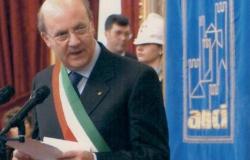Pisa, 14 June 2024 – From 15 June to 30 September 2024 in the exhibition space of the Palazzo dell’Opera del Duomo, in Piazza dei Miracoli in Pisa, the exhibition will be held The Tower in the Mirror. The many lives of the Bell Tower of Pisa Cathedral. Designed and organised by the Opera della Primaziale Pisana on the occasion of the 850th anniversary of the laying of the first stone of the monument, is edited by Stefano Renzoni. Through over 100 works including drawings, engravings, paintings, sculptures and photographs ranging from the 13th century to the present day, the exhibition intends to illustrate how the perception of the most famous bell tower in the world has changed over the centuries. The figurative arts bear witness how the identity of the Tower and the meaning attributed to it has profoundly changed, with changes in sensitivity and times. If until the 17th century the Tower was usually depicted as part of a whole, that is, located near the Cathedral and therefore identified as a bell tower, an architecture that marks the liturgical hours and marks men’s appointments towards God, starting from the 18th century it was increasingly it is often depicted isolated, separated from the rest of the ecclesiastical buildings. It was a sort of secularization of the perception of the building, which not by chance coincided with the widespread diffusion of the Grand Tour, a phenomenon which, in some way, anticipated what tourism entailed for many places of art and faith. Pisan architecture was thus transformed from a bell tower to a tower, from Bell Tower to Leaning Tower. Transformed into a fetish, into a self-referential icon, the Tower of Pisa is interpreted today as an image of the city, but also as a symbol of Italy in the world, thus showing a truly surprising communicative power. A fate that unites it with other contemporary icons, such as the Mona Lisa, destined to be consumed by the eyes of distracted, hasty visitors who are often unaware of the meanings that the work brings with it. The exhibition thus leads us to focus on the monument, to rediscover its history and meaning, starting from the religious one to which the opening of the exhibition itinerary refers with a section, created with the collaboration of Francesca Barsotti, responsible for the Ecclesiastical Cultural Heritage of the Archdiocese of Pisa, who underlines the primary function of the Tower, giving it back the identity of a place that marks the time of faith and of the faithful. A room follows, edited by Professor Giulia Ammannati of the Scuola Normale Superiore, which addresses the problem of Torre’s autography, a traditional subject of debate among scholars, traced by Ammannati herself to the credible outcome of Bonanno Pisano’s authorship. Of exceptional importance is the display of a 13th century parchment, the first to show the Tower at the time of the interruption of work due to subsidence of the ground. Ample space is dedicated to the interpretation of the Tower given by contemporary artists, in the sign of a continuity that offers important food for thought. Starting from the true passion of the artists of Second Futurism, such as the Viareggio artist Umberto Bonettiuntil Magritte and Keith Haring. Also on display are works by living artists such as Giuseppe Bartolini, Gianni Lucchesi And Francesco Barbieriwhich still today deal with the theme of the Bell Tower.
The exhibition then develops with numerous and precious pictorial and graphic testimonies from the 15th to the 19th century which specify the pinnacles of perception: from the 15th century gold backgrounds to Giorgio Vasarifrom Benedetto Luti to Francesco Pascucci, which represents the Tower of Pisa as if it were the city of Troy conquered by the Greeks. One of the chapters of the exhibition, in which some teachers from the University of Florence participated, it is dedicated to the restorations that have marked its existence since at least the 19th century. Some of the Tower’s restoration projects are on display, with absolutely extraordinary episodes such as the project to introduce an elevator into the Bell Tower. The most recent restorations that saved the Tower are also extensively documented, in a section created with the collaboration of the engineer Antonio Squeglia of the University of Pisa. On display is a large collection of bizarre, strange, impossible drawings, which were sent from all over the world to the Opera della Primaziale Pisana, when in the Seventies the need, including the media, for a solution-solving intervention became increasingly strong.
Finally, ample space was given to the very intense phenomenon, even before the era of selfies, of photographs, documented here by beautiful black and white finds, in a section created in collaboration with Manuel RossiResponsible for the Artistic Heritage of the Opera della Primaziale Pisana.





